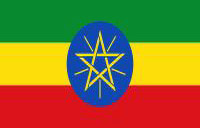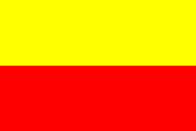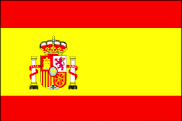
Henri Moissan Doctoral degree
The Nobel Peace Prize in Chemistry 1906
Chemist - inorganic. Isolated fluorine. Moissan's electric furnace. Blue perchromic acid formula, crystallized chromic acid. Uncovered silicon carbide, other carbides, borides, silicides. Theorized:
from molten iron crystallize carbon under pressure, obtain synthetic diamonds. Meticulous, patient. Articulate lecturer.
“Scientific research is search for truth. Only after discovery, applicability can be considered.â€
Biography
By Denzil Brinley, BSME. MBA. Edited by Chuck Gooley, Physical Organic Chemist, Software Engineer, Web Developer and GIS specialist, Los Angeles, CA.Abstract
Nobel Laureate Henri Moissan is best known for his discovery of fluorine and refining the electric-arc furnace. As most people know, fluoride (really fluoride-containing compounds such as sodium fluoride and sodium monofluorophosphate) is used in the prevention of tooth decay (cavities). Lesser known is that the largest volume of fluoride is used in the manufacturer of steel and aluminum. Moissan’s electric-arc furnace (also known as the Moissan furnace) was a newer type of electric-arc furnace that could reach temperatures up to 3,500°C (6,500°F), doubling the temperature created by existing electric-arc furnaces. His furnace provided a method for creating numerous new compounds by melting or fusing substances previously regarded as infusible.
Biography
Moissan was born in Paris on September 28,1852. His father, Francis Ferdinand Moissan, was a low-level officer for the Eastern Railway Company. His mother, Josephine Mitel, was a seamstress and of Jewish descent. In 1864, the family moved to the Meaux, France where Henri attended the local schools.
In 1870, Moissan left school without the grades needed to attend university, so he began working for a chemist. This led him to wanting to study chemistry, so he resigned and began his studies at the Museum of Natural History, first with Edmond Fremy and then Pierre Paul Deherain. Deherain is created with inspiring Henri to pursue a career in academia. Moissan then joined the Debray and Troost laboratories at the Sorbonne. In 1879, he was appointed to a junior position in the Agronomic Institute and in 1880, received his doctorate with a thesis on cyanogen (a colorless, toxic gas with a pungent odor that is mainly used in the production of fertilizers). He then took an assistant lecturer and senior demonstrator position at the School of Pharmacy. In 1886, he became a professor of toxicology and a professor of inorganic chemistry in 1889. In 1890, he became a professor of inorganic chemistry at the Sorbonne. That same year, he succeeded Louis Joseph Troost as Professor of Inorganic Chemistry at the University of Paris.
Moissan died of appendicitis on February 20, 1907 in Paris, at the age of 54, two months after returning from Stockholm, where he accepted his Nobel Prize. It has been speculated that repeated exposure to fluorine and carbon monoxide from his furnaces contributed to his death.
Scientific Work
Starting in 1884, Moissan took up the study of fluorine compounds. Fluorine was already known to be is a highly reactive element (F with an atomic number 9). It is corrosive, poisonous, toxic and explosive (many scientists have died experimenting with fluorine), and bonds to almost any element. It is so reactive that, in its pure form, it burns a bright flame when it comes in contact with many elements and substances (even water). It is so reactive that it cannot be kept in glass bottles but must be kept in specialized quartz tubes lined with a thin layer of fluorocarbons. The other difficulty with fluorine is that is does not come in a natural state but is always bonded with other elements. This is why Moissan’s discovery is considered so important. He was able to isolate the pure element.
In 1886, when he passed a current through a solution of potassium fluoride in hydrofluoric acid, it produced the highly reactive gas fluorine (F2); often called the chemistry’s “hellcatâ€. Moissan made a full study of its properties and reactions with other elements. During World War II, gas fluoride was used in the production of uranium.
in 1891, he discovered carborundum (also known as silicon carbide or SiC). It is a semiconductor made up of silicon and carbon. It occurs naturally as the rare mineral moissanite. Carborundum was original used as an abrasive, but because its durability, it is now often used in car brakes, car clutches, bulletproof vest, light-emitting diodes (LEDs) and semiconductor electronic devices.
In 1892, Moissan developed the electric-arc furnace. Although the electric-arc furnace was already in use, as early as 1810, to melt iron (which melts at 1,500°C (2,800°F), it was Moissan’s electric-arc furnace that could reach temperatures up to 3,500°C (6,500°F). This provided a method for creating numerous new compounds and vaporizing substances previously regarded as infusible. Before the invention of the electric-arc furnace, charcoal, coal and gas were the source of heat.
In 1892, he devised a commercially profitable method of producing acetylene (also called ethyne). Pure acetylene is a colorless, inflammable gas with a pleasant odor. However, when combined with air, it creates a large amount of heat and reaches temperatures close to that of Moissan’s furnace. Experimenting with this compound in his furnace is probably how he develop this method.
In 1893, Moissan theorized that diamonds could be synthesized by crystallizing carbon under pressure from molten iron and later claimed to have synthesized miniature diamonds in his furnace. These is some doubt if this truly occurred.
Discover Your Abilities and Aspirations!
 $10 $25 $50 $100 Other
$10 $25 $50 $100 Other
Tax Exempt 501(c)3 Non-Profit Organization
Any Currency
“…the peace that is found in libraries and laboratories…” - Louis Pasteur
Copyright © 2023 Ganga Library Inc. All Rights reserved.;

Photo Wiki. PD Painting Tim Tompkins PaintHistory.com
Name: Henri Moissan
Birth: 28 September, 1952, Paris, France
Death: 20 February, 1907, Paris, France
Affiliation: Sorbonne University, Paris, France
Prize Motivation: "in recognition of the great services rendered by him in his investigation and isolation of the element fluorine, and for the adoption in the service of science of the electric furnace called after him."
Education: College de Meaux. Musee d’Histoire Naturelle - Edmond Fremy’s lab. Doctoral
degree Agronomic Institute 1880; thesis: cyanogen series.
Biography
Eponyms
Books
Publications
Quotations
Images














